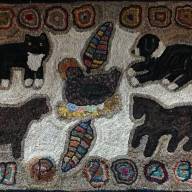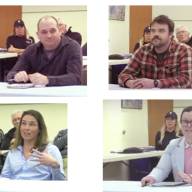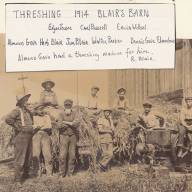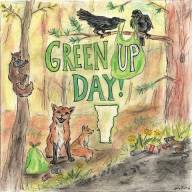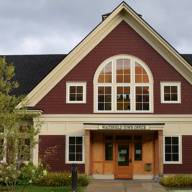This is the question that has been running through my head since I first started getting reports from around the watershed on the morning of July 11. There are so many factors at play and it's not an easy question to answer. There is the character of the storm itself; we saw less rain actually land in the Mad River Valley than landed in surrounding areas, particularly those to the north and east. And, in comparison to Irene, the rain fell over a longer period of time.
And there is the landscape; The Valley is quite steep and its streams 'flashy', allowing the water to drain out of the watershed at pace with the rate it fell from the sky. We also have significant intact forests in our upland, the Northfield Range and the Green Mountain forests slowed and absorbed the impact of the storm.
It's also worth considering the work this community has done since Irene. Just to name a few examples; a series of drywells along Fuller Hill in Warren intercepted stormwater, reducing the flow of water and capturing sediment and pollutants before it reached the Mad River. The undersized culvert replaced on Lincoln Brook in 2019 was able to handle this storm with room to spare, protecting the road and downstream crossings as well. The flood plain restoration at the Austin Parcel in Waitsfield, as well as a number of tree planting and buffer restoration projects across The Valley, provided areas where flood waters can spread out without causing damage.
The unfortunate truth of this storm is that, as a result of a changing climate, we are likely to see more like it before too long. One storm can be hard to tie to climate change, but the science is clear -- a warmer and wetter Northeast will lead to larger, more damaging storms. While we need to continue to do the work of reducing our carbon emissions, we also have to the responsibility to build resilience into our landscape, our towns, and our communities.
However, all these pieces fit together, we can be thankful that our local community got through this storm mostly unscathed. At the same time, our hearts go out to those neighboring communities who are experiencing, in some cases, the worst flooding and damages since 1927. I live in Montpelier, and it has been painful watching shopkeepers and downtown residents parse through the damage to their properties. It has also been encouraging to watch a different kind of flood, as hundreds of volunteers pour into town.
The relatively little damage to the Mad River watershed is an opportunity to be a good neighbor. And in the weeks to come the need for volunteers and support in neighboring communities will remain. We know from our experience with Irene how long and difficult the road to recovery can be. We also know that through the strength of our community we can get through it together.
Shadis is the executive director of Friends of the Mad River.




